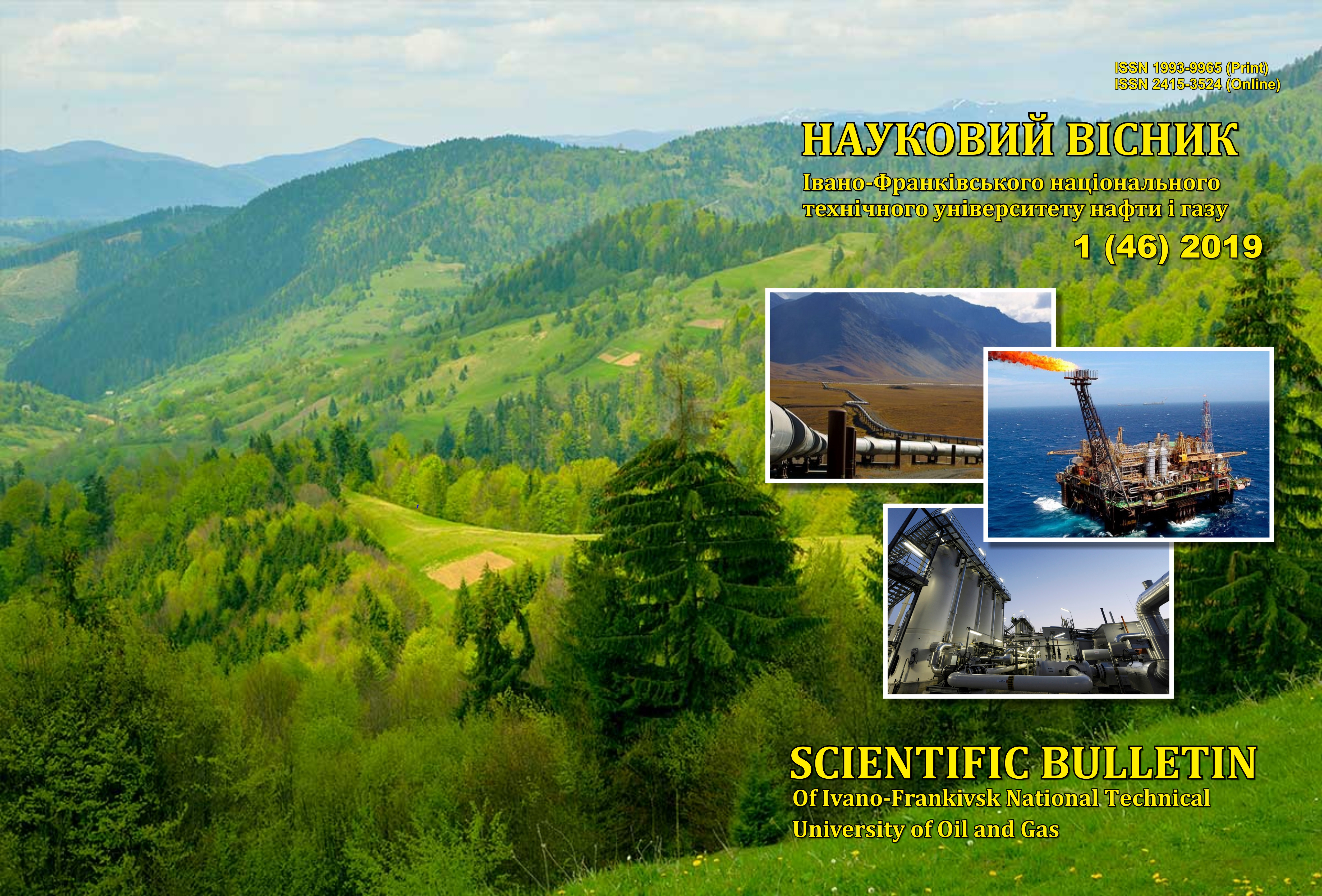IMPROVEMENT OF ROD STRING DRIVE ROTATOR
DOI:
https://doi.org/10.31471/1993-9965-2019-1(46)-62-71Keywords:
choke, saddle, nozzle, wear, fraction, simulation.Abstract
At present, there is not enough literature on the study of effective methods of the pump rod cleaning from asphalt-resinous and paraffinic substances and salts using the rod string rotator. At present, no rotators have been developed that significantly reduce the wear of the sucker rod body, or can be applied to polymer composite rods.
The development of an effective rod rotor, ensuring continuous rotation of the rod string for cleaning of paraffin deposits. The choice of this method against APSD in the conditions of preserving the quality of products and implementation of normative and economic indicators in modern conditions is an important and topical issue.
The design of the rod string rotator is developed, ensuring continuous rotation of the rod string from an independent actuator. This rotator design modernization makes it possible to reduce the amount of wearable parts, ensures independence of rotation from the progress of the rocking machine, which makes it possible to rotate the column of the rod at moments when the walking beam is at the top or bottom point, the rotation is carried out smoothly and without jerks, because with a mechanical drive slight jerks (when the rod is in contact with the tubing) is possible, the ease of replacing worn parts, inspection and replacement of the drive could be implemented.
Using SolidWorks, a finite-element analysis was performed; a body and a cover are connected by means of transverse bolts with a torque, which creates a pulling force equal to 120 kN. From the data obtained, it can be seen that in attachment points of the cover to the body of the rotary screw with the help of bolts, there are slight tensions that are permissible for these materials.
An assessment of the rod string weight on the rotating body was performed. It has been established that the deformations that occur in the attachment points of the cover to the base are within the tolerance.
Thus, these improvements provide a continuous operation of the rotator to reduce paraffin deposition in the hole and reduce the wear of the rod and tubing. A finite-element analysis of the rotator is performed, which testifies to its efficiency at application of operational loads.
Downloads
References
Persiyantsev M.N. Dobycha nefty v oslozhnennykh uslovyyakh. M. : OOO “Nedra-Byznestsentr”, 2000. 653 p.
Kopey B.V., Kopey V.B., Kopey I.B. Nasosni shtanhy sverdlovynnykh ustanovok dlya vydobuvannya nafty Ivano-Frankivsk : IFNTUNH, 2009. 406 p.
Tronov V.P. Mekhanyzm obrazovanyya smolo-parafynovykh otlozhenyy i borba s nymy. M. : Nedra, 1995. 192 p.
http://um.co.ua/8/8-11/8-11144.html.
Clayton T. Hendrіcks, Russell D. Stevens. Sucker rod faіlure analysіs. Specіal report from Norrіs. Tulsa, 2005. 15 p.
Downloads
Published
How to Cite
Issue
Section
License
Авторські права....


1.png)







1.png)







